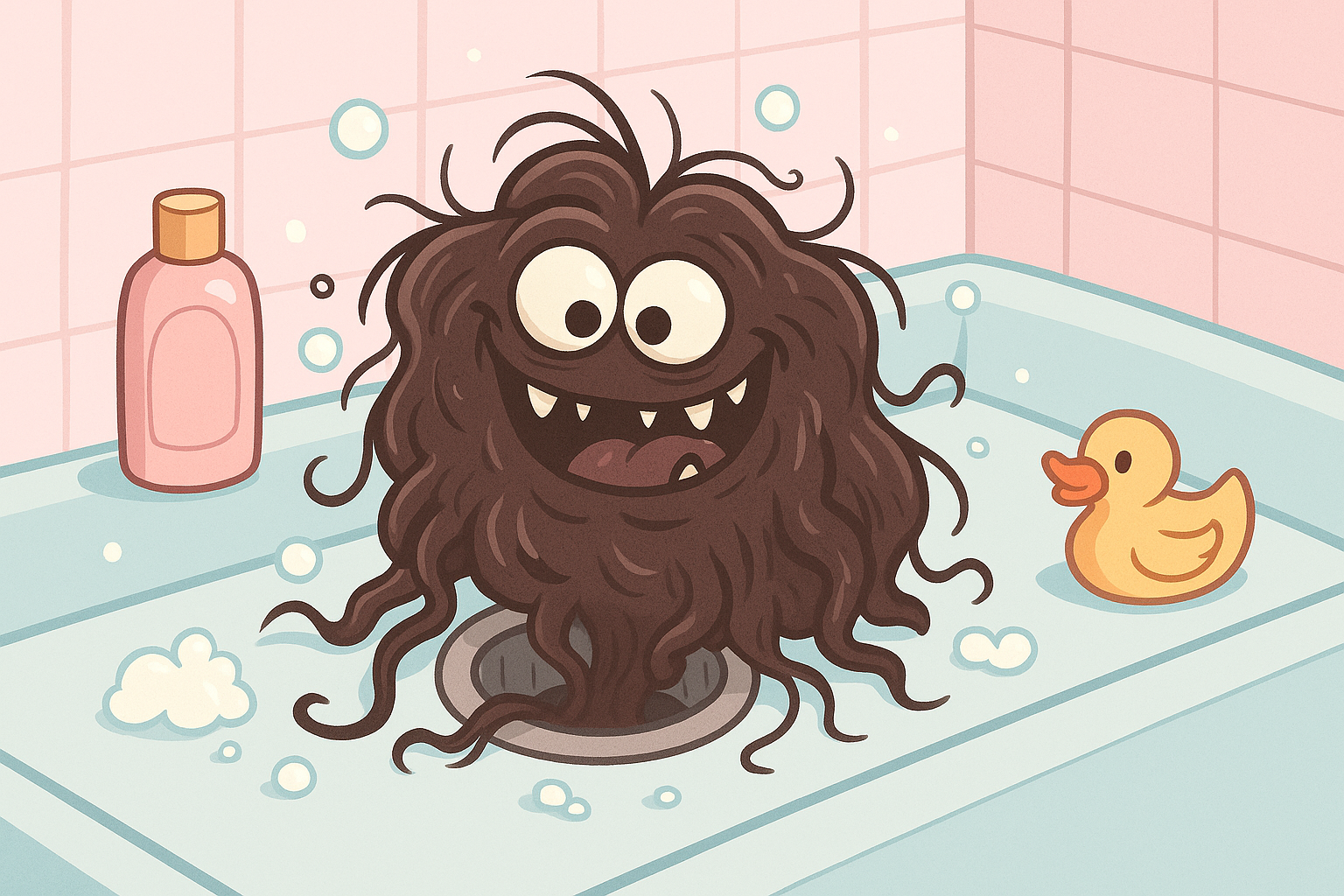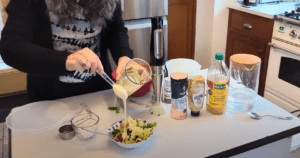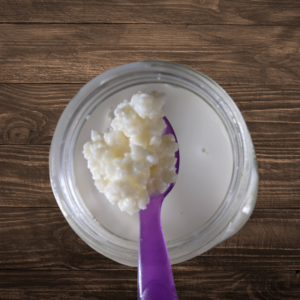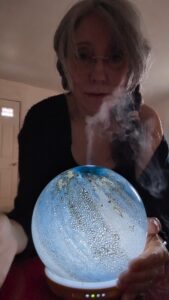As we age, our skin changes. Fine lines, wrinkles, and rough patches can appear, prompting many to seek expensive treatments and harsh chemicals in the quest for a youthful glow. But what if there was a gentler, more natural path to achieving radiant skin?
Thankfully, there’s a growing awareness of the power of natural, non-toxic beauty products. These gentle formulations offer a holistic approach to skincare, nourishing and revitalizing your skin without introducing harmful toxins.
The benefits of natural products for aging skin extend far beyond your beautiful complexion! By opting for natural alternatives, you’re safeguarding your health, as some conventional skincare ingredients, like parabens and heavy metals, have been linked to potential health concerns [1].

Imagine achieving a more radiant version of yourself – naturally, and without compromising your overall health! Throughout this article we’ll take a beginners journey on the fascinating world of natural skincare.
We’ll explore the benefits of natural ingredients, delve into the science behind LED light therapy, and introduce you to highly regarded non-toxic brands and products.
We’ll even show you how to create your own DIY skincare recipes using ingredients readily available in your kitchen!
Get ready to discover the transformative power of natural beauty. Let’s start this journey together!
The 5 Pillars of Essential Natural Products for Aging Skin
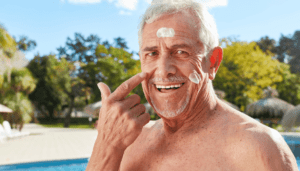 Depending on whether you are a male or female, you may be experiencing changes in your skin that you have absolutely no control over.
Depending on whether you are a male or female, you may be experiencing changes in your skin that you have absolutely no control over.
For example, women who have approached the age of menopause may experience things like collagen loss, drop in estrogen, testosterone increase, poor sleep and so on. ALL of these things contribute to aging skin!
Consider these five essential aspects of your skincare routine as the pillars for restoring your skin’s natural beauty:
- Cleansing
- Moisturizing
- Nourishing
- Protecting
- Exfoliating
Following are the widely recognized product types that can help combat the changes and make your skin less prone to showing wrinkles, sagging, age spots and so on. There are no miracles here, but if you make an effort to utilize the natural products for aging skin, you will indeed notice improvements. If you have been neglecting your skin, the improvements make take a while, so begin today!
- Morning:
- Foaming or Hydrating Cleanser: Use a cleanser that will not dry your skin, but will cleanse it gently.
- Antioxidant Serum: Look for one with Vitamin C and Vitamin E.
- Brightening Cream: Consider ingredients like kojic acid or licorice root extract.
- Moisturizer: Hyaluronic acid or ceramides are good for added hydration.
- Sunscreen (SPF 30 or higher): Sun protection is crucial.
- Evening:
- Cleansing:
- First cleanse with an oil cleanser to remove makeup, dirt, and grime.
- Second cleanse with a foaming or hydrating cleanser.
- Retinol or Bakuchiol: Retinol is a classic anti-aging ingredient, but bakuchiol is a gentler plant-based alternative.
- Peptide Cream or Moisturizer: Peptides help stimulate collagen production.
- Night Cream: Look for one with hyaluronic acid, glycerin, or ceramides for deep hydration.
- Cleansing:
- Weekly:
- Gentle Exfoliation: Use a gentle scrub or alpha hydroxy acid (AHA) peel.
As an Amazon Associate, I may earn from qualifying purchases at no cost to you.
A Word About Exfoliating
I have had rough and sensitive skin for many, many years. This is because I suffered with rosacea, beginning about 20 years ago. I was told never to exfoliate my skin, as it would cause flareups.
However, I recently discovered that without exfoliating I would never achieve the lovely skin I desired. After a whole lot of research I finally discovered a method of exfoliating that is working beautifully for me, and has not damaged or irritated my sensitive facial skin whatsoever.
It’s a type of sponge. I was shocked to learn that many people already knew about this little gem and how it can bring your face to rough to dewy in a matter of a couple of weeks.
Check it out here: Konjac Sponge
This is the exact set that I purchased, and for less than $3 per sponge, this gets my all time best purchase award! And it’s even an all natural product!! You simply wet it, apply your facial cleaner and gently rub it wherever you feel it’s needed. You can feel the roughness being rubbed off. Words can not describe how satisfying this little thing is!
Click to view the short video
As an Amazon Associate, I may earn from qualifying purchases at no cost to you.
LED Light Therapy for the Face
Before we jump into the usual creams and other natural products for aging skin I want to make you aware of LED light therapy. If you’re thinking RED light therapy, please read on, as this is slightly different… and better.
- What is LED Light Therapy?
- Uses light emitting diodes (LEDs) to emit specific wavelengths of light.
- Different wavelengths target various skin concerns.
- Examples of wavelengths used in LED therapy include red light, blue light, and near-infrared light.
- Can be used for facial concerns like wrinkles, acne, and wound healing.
- LED vs RED light Therapy
- Please note that we are referring to LED light therapy here. LED light therapy devices, such as the one below, include RED light as well as other light/wavelengths.
- How LED Light Therapy Works for Aging Skin
- Stimulating collagen production
- Reducing fine lines and wrinkles
- Highly Rated LED Light Therapy Product
- The LED Red Light Therapy Mask for Face
- See the studies that do show that LED light therapy is effective
- Nevermind how crazy it looks – click to check out this mask: CLICK HERE
Highly Regarded Non-Toxic Brands and Products
 When you consider the widely known cancer risks associate with talc, for example, you would think that it would not be used in products that touch our skin or are inhaled. However, talc is still widely used.
Unfortunately, checking product ingredients is quite tedious. I often find that the ingredients are not listed (online) and must be searched for or the ingredients are too small to read (in person) without a strong magnifying glass.
For this reason, I find that I like to look for brands that are seriously committed to providing non-toxic and natural products for aging skin. I do not find it necessary to hunt for the ingredients on their products since they have made a commitment to their consumers not to poison them!
When you consider the widely known cancer risks associate with talc, for example, you would think that it would not be used in products that touch our skin or are inhaled. However, talc is still widely used.
Unfortunately, checking product ingredients is quite tedious. I often find that the ingredients are not listed (online) and must be searched for or the ingredients are too small to read (in person) without a strong magnifying glass.
For this reason, I find that I like to look for brands that are seriously committed to providing non-toxic and natural products for aging skin. I do not find it necessary to hunt for the ingredients on their products since they have made a commitment to their consumers not to poison them!
- Clean and Non-Toxic Skincare Brands
- Please bookmark this article to come back and check this list from time to time. I’ll be adding to it as I learn of additional brands that can be trusted!
How To Check Product Ingredient Safety
 Utilize these fantastic websites and apps: They go into detail about product safety, ingredient by ingredient. Try them out today!
Utilize these fantastic websites and apps: They go into detail about product safety, ingredient by ingredient. Try them out today!
- Environmental Working Group (EWG) — Search by product name or ingredient, or use their mobile scanner.
- CosDNA — Paste ingredients into the box to analyze them.
- Think Dirty App — Scan UPC labels or search manually.
- Parabens (e.g., methylparaben, propylparaben, butylparaben):
- Used as preservatives.
- Linked to hormone disruption and increased risk of breast cancer.
- Phthalates (e.g., diethyl phthalate, DEP):
- Often used to make fragrances last longer.
- Associated with hormone disruption and reproductive issues.
- Formaldehyde and Formaldehyde-Releasing Preservatives (e.g., DMDM hydantoin, imidazolidinyl urea):
- Used as preservatives.
- Known carcinogen and can cause skin irritation.
- Sodium Lauryl Sulfate (SLS) and Sodium Laureth Sulfate (SLES):
- Used as foaming agents in cleansers and shampoos.
- Can cause skin irritation and strip away natural oils.
- Fragrance/Parfum:
- Can contain a mix of potentially harmful chemicals.
- Linked to allergies, skin irritation, and hormone disruption.
- Mineral Oil and Petrolatum:
- Used as moisturizing agents.
- Can clog pores and may contain contaminants linked to cancer.
- Talc:
- Used in powders and some makeup products.
- Can be contaminated with asbestos, a known carcinogen.
- Triclosan:
- Used as an antibacterial agent.
- Linked to hormone disruption and may contribute to antibiotic resistance.
- Polyethylene Glycol (PEG) Compounds:
- Used as thickeners, solvents, and moisture-carriers.
- Can be contaminated with ethylene oxide and 1,4-dioxane, both of which are carcinogens.
- Oxybenzone and Octinoxate:
- Common in chemical sunscreens.
- Linked to hormone disruption and can cause allergic reactions.
- Retinyl Palmitate and Retinol:
- Forms of vitamin A used in anti-aging products.
- Can increase skin sensitivity and may be linked to skin cancer when exposed to sunlight.
- Hydroquinone:
- Used for skin lightening.
- Linked to cancer and ochronosis (a skin condition causing blue-black discoloration).
Make Your Own Natural Products for Aging Skin
 Kitchen Ingredients
Kitchen Ingredients
While store-bought skincare products offer a variety of benefits, some people prefer a more natural approach by using ingredients readily available in their kitchens.
However, it’s important to remember that these ingredients haven’t necessarily been through the same testing and development processes as formulated skincare products.
For this reason, before diving into creating DIY masks or scrubs, consulting with a dermatologist or doctor is advised. They can provide personalized advice based on your specific skin type and any underlying conditions you may have.
With a green light from your dermatologist, here are some common household ingredients that generally score well on the Environmental Working Group’s (EWG) Score (see explanation of this below) and may offer benefits for aging skin:

Kitchen Ingredients That Can Be Used On Skin
Moisturizing and Soothing:
- Honey: Humectant, attracts moisture (EWG Score: 1)
- Avocado: Rich in healthy fats and antioxidants (EWG Score: 1)
- Aloe vera gel: Soothing and hydrating (EWG Score: 1)
- Oatmeal (ground): Soothing and anti-inflammatory (EWG Score: 1)
- Plain yogurt: Soothing and provides lactic acid for gentle exfoliation (EWG Score: 1)
- Kefir: May offer similar benefits to yogurt, with potentially added probiotics for a balanced skin microbiome (EWG Score not available)
Exfoliating:
- Oatmeal (ground): Gentle physical exfoliant (EWG Score: 1)
- Baking soda: Gentle physical exfoliant (EWG Score: 2) – Use sparingly to avoid irritation
- Ripe banana: Gentle physical exfoliant (EWG Score: 1)
Soothing:
- Cucumber slices: Cooling and hydrating (EWG Score: 1)
- Green tea (cooled): Anti-inflammatory properties (EWG Score: 1)
Important Considerations:
- Patch test any new ingredient on a small area of your arm before applying to your face, especially kefir as it contains live bacteria.
- Consult a dermatologist if you have any concerns about your skin or underlying conditions, particularly if you have compromised skin, rosacea or eczema.
- Freshness matters: Use fresh kefir for best results.
- Limited research: While some studies suggest benefits of topical kefir for skin health, more research is needed to confirm its effectiveness for aging skin.
- Not a replacement: These ingredients may not be as effective as formulated skincare products.
The EWG Scores provide a general idea of the safety of the ingredient based on EWG’s criteria. A score of 1 is the safest. Further explanation of EWG is above.
 Essential Oils for Anti-Aging
Essential Oils for Anti-Aging
Essential oils, concentrated plant extracts, have gained popularity in recent years for their potential benefits in skincare. Proponents claim they offer anti-inflammatory and antioxidant properties, which may be helpful for aging skin. However, it’s important to approach them with caution and proper knowledge.
- Anti-inflammatory: Inflammation is a key contributor to the visible signs of aging. Some essential oils, like chamomile, are believed to possess anti-inflammatory properties that can soothe irritated skin and reduce redness.
- Antioxidant Shield: Free radicals are unstable molecules that damage skin cells and contribute to wrinkles and loss of elasticity. Essential oils rich in antioxidants, like frankincense and lavender, may help combat free radical damage and protect the skin.
Popular Anti-Aging Essential Oils:
While research is ongoing, some essential oils are particularly popular for addressing aging skin concerns:
- Frankincense: Prized for its cell-regenerative properties, this oil may reduce the appearance of wrinkles and fine lines.
- Lavender: Known for its calming and soothing properties, lavender oil may also help reduce inflammation and promote skin healing.
- Rose: Luxurious rose oil is believed to be a natural astringent, tightening pores and minimizing their appearance while offering some hydrating benefits.
Essential Oil Powerhouses for Aging Skin (with Dilution):
- Carrot Seed Oil: Rich in beta-carotene, a precursor to vitamin A, this oil may stimulate collagen production and improve elasticity.
- Chamomile Oil: Known for its calming and soothing properties, chamomile oil may also help reduce inflammation and redness, potentially calming irritation associated with aging skin.
- Geranium Oil: Known for balancing sebum production, geranium oil is thought to minimize wrinkles and age spots.
- Neroli Oil: Extracted from bitter orange blossoms, neroli oil may improve elasticity and reduce wrinkles.
- Pomegranate Seed Oil (Limited Use): Packed with antioxidants, it may protect the skin and promote cell regeneration, but use sparingly due to potential sun sensitivity.
- Sandalwood Oil (Limited Use): With anti-inflammatory and antiseptic properties, sandalwood oil may soothe irritation and reduce wrinkles, but use sparingly due to the potential for dryness.
- Ylang Ylang Oil (Limited Use): This calming oil is believed to promote cell regeneration and improve elasticity, but use sparingly as it can be irritating to some.
Important Considerations:
- Patch Test: Always patch test any new essential oil on a small area of your arm before applying it to your face to avoid potential allergic reactions.
- Consultation: If you have concerns about your skin or underlying conditions, especially if you have sensitive skin or allergies, consult a dermatologist.
- Dilution: Essential oils are highly concentrated and should be diluted with a carrier oil (like jojoba, almond, or coconut oil) before applying to the skin to prevent irritation.
- Limited Use: Use oils like pomegranate seed, sandalwood, and ylang ylang sparingly due to their potential for causing irritation or dryness.
Remember:
Essential oils are not a magic bullet for aging skin. A consistent skincare routine that includes sun protection, proper cleansing, and moisturizing is essential. Essential oils, when used safely and appropriately, may offer some additional benefits but should be considered a complementary approach.
 Carrier Oils
Carrier Oils
Carrier oils, unlike essential oils, are generally safe for direct application on the face without dilution. Extracted from plant sources, these vegetable oils offer a range of benefits to address aging skin concerns. Here’s a closer look at some popular carrier oils known for their potential anti-aging properties:
Argan Oil: Packed with vitamin E and essential fatty acids, argan oil is a champion for moisturizing and anti-aging. It may help improve elasticity, reduce wrinkles, and soothe irritation.
Avocado Oil: Rich in vitamins A, E, and D, avocado oil nourishes the skin and may enhance elasticity. Its antioxidant properties can help combat free radical damage, a major contributor to wrinkles.
Jojoba Oil: Known for its close resemblance to human sebum, jojoba oil absorbs readily into the skin, providing excellent hydration. It may also help regulate sebum production and has anti-inflammatory properties.
Rosehip Seed Oil: A popular choice for its regenerative properties, rosehip seed oil is rich in vitamin A and antioxidants. It may help reduce wrinkles, improve skin texture, and fade hyperpigmentation.
Squalane Oil: Derived from olive oil, squalane oil is lightweight and easily absorbed. It may help improve hydration, reduce wrinkles, and protect the skin from environmental damage.
Using Carrier Oils for Mature Skin:
Direct Application: Apply a few drops of the chosen carrier oil directly to cleansed skin and massage gently until absorbed.
Combination Use: Carrier oils can be used alone or combined with other skincare products, like moisturizers or serums, for added benefits.
Quality Matters: Look for cold-pressed and organic carrier oils for optimal quality.
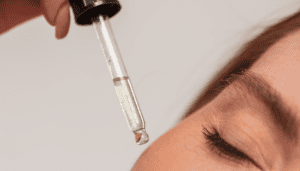 Carrier Oil Application Tips
Carrier Oil Application Tips
We will discuss DIY recipes next, but here are some tips for directly incorporating carrier oils into your anti-aging skincare routine:
Nighttime Nourishment: Apply a few drops of carrier oil as the last step in your nighttime routine to lock in moisture and support overnight skin repair.
Targeted Treatment: For dry patches or dehydrated areas, focus on applying carrier oil directly to those concerns.
DIY Facial Massage: Combine a few drops of carrier oil with your favorite moisturizer for a luxurious and hydrating facial massage. This can help improve circulation and promote a youthful glow.
Important Reminders:
Patch Test: Always perform a patch test before applying any new product to your face to ensure there are no adverse reactions.
Consultation: Consult a dermatologist for personalized recommendations, especially if you have any underlying skin conditions.
Consistency: Remember, consistency is key! While carrier oils offer natural benefits, a well-rounded skincare routine with sun protection is essential for healthy, radiant skin at any age.
Summing Up the DIY Ingredients
Following is the full list of household ingredients that can be used as natural products for aging skin. Next, we’ll discuss combining these ingredients in recipes that are fun, yet effective.
Moisturizing and Soothing Ingredients:
- Honey
- Avocado
- Aloe vera gel
- Ground oatmeal
- Plain yogurt
- Kefir
- Milk
Exfoliating Ingredients:
- Ground oatmeal
- Baking soda
- Ripe banana
Soothing Ingredients:
- Cucumber slices
- Cooled green tea
Tightening and Firming Ingredients:
- Egg whites
Essential Oils:
- Frankincense oil
- Lavender oil
- Rose oil
- Carrot seed oil
- Chamomile oil
- Geranium oil
- Neroli oil
- Pomegranate seed oil (limited use)
- Sandalwood oil (limited use)
- Ylang ylang oil (limited use)
Carrier Oils:
- Argan oil
- Avocado oil
- Jojoba oil
- Rosehip seed oil
- Squalane oil

DIY Recipes for Natural Aging Skincare
Ready to ditch the pricey natural products for aging skin and embrace the power of your kitchen skills?
We’ve taken the carrier oils, essential oils and kitchen staples mentioned previously and transformed them into masks, scrubs, balms, and mists specifically formulated to target mature skin concerns. So, grab your mixing bowls and get ready to whip up some age-defying goodness!
1. Hydrating and Soothing Face Mask
Ingredients:
- 1 tablespoon honey
- 1/2 ripe avocado, mashed
- 1 tablespoon aloe vera gel
- 1 tablespoon plain yogurt
Instructions:
- Mix all the ingredients in a bowl until smooth.
- Apply the mixture to your face and neck, avoiding the eye area.
- Leave on for 20 minutes.
- Rinse off with lukewarm water and pat dry.
Benefits: This mask provides deep hydration and soothes irritated skin, improving elasticity and reducing the appearance of fine lines.
2. Gentle Exfoliating Scrub
Ingredients:
- 2 tablespoons ground oatmeal
- 1 tablespoon plain yogurt
- 1 teaspoon honey
- 1/2 ripe banana, mashed
Instructions:
- Combine all the ingredients in a bowl.
- Gently massage the mixture onto your face in circular motions for 1-2 minutes.
- Leave it on for an additional 10 minutes.
- Rinse off with lukewarm water and pat dry.
Benefits: This scrub gently exfoliates dead skin cells, leaving the skin smooth and refreshed without causing irritation.
3. Anti-Aging Firming Mask
Ingredients:
- 1 egg white
- 1 teaspoon honey
- 1/2 teaspoon rose oil
- 1 teaspoon cucumber juice (grate cucumber and squeeze juice)
Instructions:
- Whisk the egg white until frothy.
- Add honey, rose oil, and cucumber juice, and mix well.
- Apply the mixture to your face and neck, avoiding the eye area.
- Leave on for 15-20 minutes until dry.
- Rinse off with cool water and pat dry.
Benefits: This mask helps to tighten and firm the skin, reducing the appearance of sagging and fine lines.
4. Brightening and Rejuvenating Face Mask
Ingredients:
- 1 tablespoon milk
- 1 tablespoon ground oatmeal
- 1 teaspoon honey
- 2-3 drops frankincense oil
Instructions:
- Mix all the ingredients into a smooth paste.
- Apply evenly to your face and neck.
- Leave on for 20 minutes.
- Rinse off with lukewarm water and pat dry.
Benefits: This mask helps to brighten dull skin and rejuvenate the complexion, giving it a youthful glow.
5. Deep Moisturizing Night Treatment
Ingredients:
- 1 teaspoon argan oil
- 1 teaspoon rosehip seed oil
- 1 teaspoon squalane oil
- 2 drops lavender oil
- 2 drops geranium oil
Instructions:
- Mix all the oils in a small dropper bottle.
- Apply a few drops to your face and neck after cleansing, gently massaging in.
- Leave on overnight.
Benefits: This treatment deeply moisturizes the skin, improving elasticity and reducing the appearance of wrinkles.
6. Calming and Anti-Inflammatory Face Mask
Ingredients:
- 1 tablespoon chamomile tea (cooled)
- 1 tablespoon aloe vera gel
- 1 teaspoon honey
- 1 teaspoon jojoba oil
Instructions:
- Mix all the ingredients into a smooth mixture.
- Apply to your face and neck, avoiding the eye area.
- Leave on for 15-20 minutes.
- Rinse off with cool water and pat dry.
Benefits: This mask soothes inflammation and calms irritated skin, making it ideal for sensitive aging skin.
7. Regenerating and Nourishing Mask
Ingredients:
- 1 tablespoon kefir
- 1 teaspoon avocado oil
- 1 teaspoon honey
- 1-2 drops carrot seed oil
Instructions:
- Mix all ingredients thoroughly.
- Apply to your face and neck.
- Leave on for 20 minutes.
- Rinse off with lukewarm water and pat dry.
Benefits: This mask nourishes and regenerates the skin, helping to improve texture and reduce the signs of aging.
8. Toning and Tightening Serum
Ingredients:
- 1 tablespoon rose water
- 1 tablespoon aloe vera gel
- 2-3 drops neroli oil
- 2-3 drops pomegranate seed oil (use sparingly)
Instructions:
- Mix all ingredients in a small bottle.
- Apply a few drops to your face and neck after cleansing.
- Use in the morning and evening.
Benefits: This serum tones and tightens the skin, improving elasticity and reducing the appearance of fine lines.
9. DIY Facial Mist
Ingredients:
- 1/2 cup cooled green tea
- 1/2 cup cucumber juice
- 1 teaspoon aloe vera gel
- 2-3 drops ylang ylang oil (use sparingly)
Instructions:
- Mix all ingredients in a spray bottle.
- Shake well before each use.
- Spray on your face as needed for a refreshing boost.
Benefits: This mist soothes, hydrates, and refreshes the skin, providing a youthful glow.

As an Amazon Associate, I may earn from qualifying purchases at no cost to you.
Natural Supplements for Aging Skin
While a well-rounded topical skincare routine is crucial, natural supplements that you ingest can offer additional support for your aging skin – from the inside out. Here are 5 all natural options, each with unique benefits:
- Marine Collagen Peptides:
- All-Natural: Derived from fish skin, marine collagen peptides are a readily absorbed source of collagen, the protein that provides skin structure and elasticity. As we age, collagen production naturally declines, contributing to wrinkles and sagging. Marine collagen peptides are a natural way to replenish collagen stores, potentially improving skin firmness and reducing the appearance of wrinkles.
- Purchase Link
- Hyaluronic Acid:
- All-Natural: Our bodies naturally produce hyaluronic acid, a substance that holds moisture in the skin, keeping it plump and hydrated. However, production diminishes with age. Hyaluronic acid supplements, often sourced through vegan fermentation, help replenish these stores, promoting skin hydration and reducing the appearance of fine lines.
- Purchase Link
- Resveratrol:
- All-Natural: Found in red grapes, berries, and peanuts, resveratrol is a powerful antioxidant. Antioxidants combat free radicals, unstable molecules that damage skin cells and accelerate aging. By neutralizing free radicals, resveratrol may help protect the skin from sun damage and premature aging, potentially improving skin texture and elasticity.
- Purchase Link
- Vitamin C:
- All-Natural: Found in citrus fruits, bell peppers, and broccoli, vitamin C is another essential nutrient for healthy skin. It plays a crucial role in collagen production and protects the skin from sun damage. Vitamin C supplements can help ensure you’re meeting your daily needs, potentially leading to firmer, brighter skin.
- Purchase Link
- Astaxanthin:
- All-Natural: Found in salmon, krill oil, and some algae, astaxanthin is a powerful antioxidant with anti-inflammatory properties. It may help protect the skin from sun damage and reduce the appearance of wrinkles. Additionally, astaxanthin’s anti-inflammatory properties may soothe irritated skin.
- Purchase Link
Note: Always consult with your doctor before starting any new supplement, especially if you have underlying health conditions or take medications.
Remember, a holistic approach to healthy skin is key. Combine natural supplements with a balanced diet, regular exercise, and a proper skincare routine for optimal results.
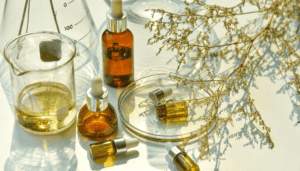
Share Your Own Favorites With Us!
Natural ingredients can be a powerful tool for achieving a radiant, youthful glow! We’re all about harnessing the power of nature for beautiful skin.
Have you discovered a hidden gem in your kitchen that works wonders on your mature skin?
Or maybe you’ve found a store-bought product packed with natural ingredients that delivers amazing results? We’d love to hear about it!
Tell us in the comments below about your favorite natural products for natural skincare, including any DIY recipes, hidden kitchen heroes, or natural brands you love.
Citation: [1] Elder, R. L. (1984). Final report on the safety assessment of methylparaben, ethylparaben, propylparaben and butylparaben. Journal of the American College of Toxicology, 3(1), 147-194. https://pubmed.ncbi.nlm.nih.gov/31903662/

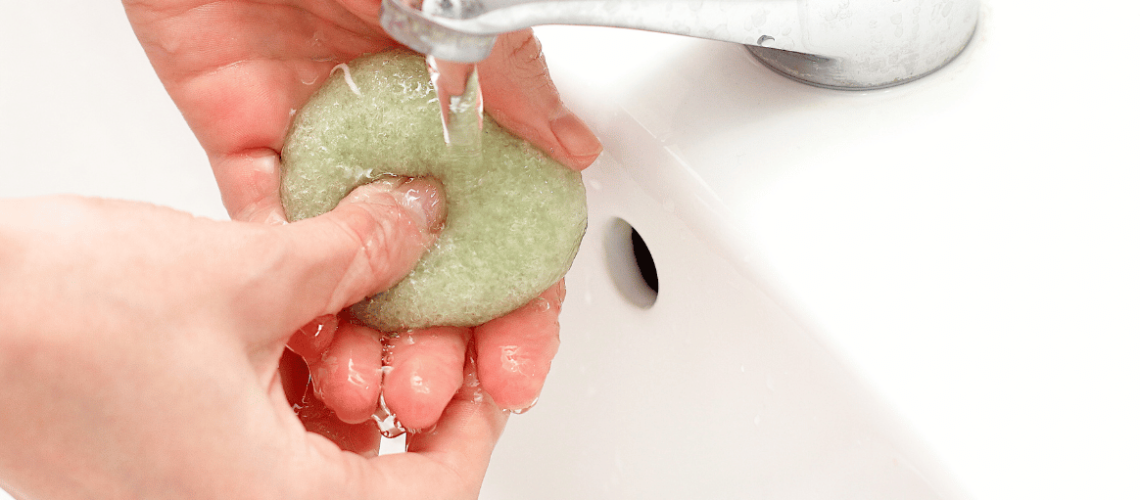
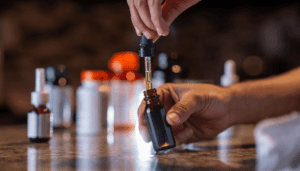 Kitchen Ingredients
Kitchen Ingredients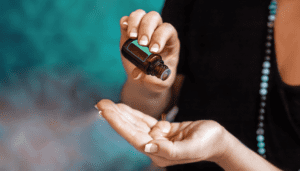 Essential Oils for Anti-Aging
Essential Oils for Anti-Aging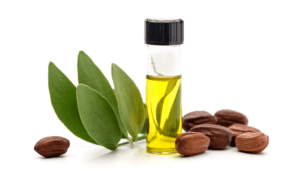 Carrier Oils
Carrier Oils